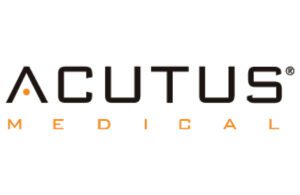 Acutus Medical (Nasdaq: AFIB) today announced the full commercial release of its next-gen AcQMap 8.5.
Acutus Medical (Nasdaq: AFIB) today announced the full commercial release of its next-gen AcQMap 8.5.
Its latest heart ultrasound platform includes software improvements that further leverage the system’s capabilities for non-contact anatomy reconstruction, according to Carlsbad, California–based Acutus.
“AcQMap 8.5 represents an important step forward in our technology roadmap with a specific focus on improving procedure workflow and physician experience,” said Derrick Chou, Acutus Medical’s SVP and CTO.
“This release enables physicians to further leverage AcQMap’s differentiated non-contact ultrasound capabilities for higher anatomical accuracy while providing a workflow that fits with existing clinical practice,” Chou said in a news release. “The full market release of AcQMap 8.5 is an important driver of our growth plans in 2023 and thereafter.”
More about Acutus Medical’s AcQMap 8.5 software
Acutus Medical first launched the AcQMap high-resolution imaging & mapping system and the 3D mapping catheter in the U.S. in 2018.
The next-gen AcQMap 8.5 software boosts fidelity and definition around key atrial structures. Think the pulmonary veins and left and right atrial appendage. In addition, it highlights open structures on the surface, such as the mitral valve. As a result, health providers can more easily locate, visualize, and incorporate the structures into an individualized treatment strategy.
There are also new workflow tools, including on-the-fly editing. Plus, AcQMap 8.5 has updated algorithms to improve catheter localization and visualization with a more accurate anatomical reference.
“AcQMap’s non-contact ultrasound technology enables me to create a high-fidelity anatomy faster than most other conventional systems,” said Dr. Douglas Gibson, director of cardiac electrophysiology at Scripps Clinic.
“This new software has been instrumental in getting better definition and catheter localization, particularly around structures which are difficult to achieve with conventional mapping technology. This accurate anatomy, combined with unique and powerful diagnostic and visualization algorithms, enables me to take a personalized approach when treating my patients with difficult-to-manage arrhythmias.”